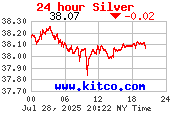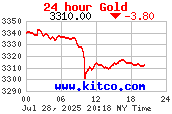EVERYDAY ANARCHY
By Stefan Molyneux
ANARCHY AND HISTORY
Our clichéd vision of the typical anarchist tends to see him emerging shortly before World War I, which is very interesting when you think about it. The stereotypical anarchist is portrayed as a feverish failure, who uses his political ideology as a self-righteous cover for his lust for violence. He claims he wishes to free the world from tyranny, when in fact all he wants to do is to break bones and take lives.
We typically view this anarchist as a form of terrorist, which is generally defined as someone committed to the use of violence to achieve political ends, and place both in the same category as those who attempt a military coup against an existing government.
However, when you break it down logically, it seems almost impossible to provide a definition of terrorism which does not also include political leaders, or at least the political process itself.
The act of war is itself an attempt to achieve political ends through the use of violence - the annexation of property, the capturing of a new tax base, or the overthrow of a foreign government - and it always requires a government that is willing and able to increase the use of violence against its own citizens, through tax increases and/or the military draft. Even defending a country against invasion inevitably requires an escalation of the use of force against domestic citizens.
Thus how can we easily divide those outside the political process who use violence to achieve their goals from those within the political process who use violence to achieve their goals? It remains a daunting task, to say the least.
What is fascinating about the mythology of the "evil anarchists" - and mythology it is - is that even if we accept the stereotype, the disparity in body counts between the anarchists and their enemies remains staggeringly misrepresented, to say the least.
Anarchists in the period before the First World War killed perhaps a dozen or a score of people, almost all of them state heads or their representatives.
On the other hand, state heads or their representatives caused the deaths of over 10 million people through the First World War.
If we value human life - as any reasonable and moral person must - then fearing anarchists rather than political leaders is like fearing spontaneous combustion rather than heart disease. In the category of "causing deaths," a single government leader outranks all anarchists tens of thousands of times.
Does this seem like a surprising perspective to you? Ah, well that is what happens when you look at the facts of the world rather than the stories of the victors. Another example would be an objective examination of murder and violence in 19th- century America. The typical story about the "Wild West" is that it was a land populated by thieves, brigands and murderers, where only the "thin blue line" of the lone local sheriffs stood between the helpless townspeople and the endless predations of swarthy and unshaven villains.
If we look at the simple facts, though, and contrast the declining 19th century US murder rates with the 600,000 murders committed in the span of a few years by the government- run Civil War, we can see that the sheriffs were not particularly dedicated to protecting the helpless townspeople, but rather delivering their money, their lives and their children to the state through the brutal enforcement of taxation and military enslavement.
When we look at an institution such as slavery, we can see that it survived, fundamentally, on two central pillars - patronizing and fear-mongering mythologies, and the shifting of the costs of enforcement to others.
What justifications were put forward, for instance, for the enslavement of blacks? Well, the "white man's burden," or the need to "Christianize" and civilize these savage heathens - this was the condescension - and also because if the slaves were turned free, plantations would be burned to the ground, pale-throated women would be savagely violated, and all the endless torments of violence and destruction would be wreaked upon society - this was the fear-mongering mythology!
Slavery as an institution could not conceivably survive economically if the slave owners had to pay for the actual expense of slavery themselves. Shifting the costs of the capture, imprisonment and return of slaves to the general taxpayer was the only way that slavery could remain profitable. The use of the political coercion required to make slavery profitable, of course, generates a great demand for mythological "cover-ups," or ideological distractions from the violence at the core of the institution. Thus violence always requires intellectualization, which is why governments always want to fund higher education and subsidize intellectuals. We shall get to more of this later.
Even outside war, in the 20th century alone, more than 270 million people were murdered by their governments. Compared to the few dozen murders committed by anarchists, it is hard to see how the fantasy of the "evil anarchist" could possibly be sustained when we compare the tiny pile of anarchist bodies to the virtual Everest of the dead heaped by governments in one century alone.
Surely if we are concerned about violence, murder, theft and rape, we should focus on those who commit the most evils - political leaders - rather than those who oppose them, even misguidedly. If we accept that political leaders murder mankind by the hundreds of millions, then we may even be tempted to have a shred of sympathy for these "evil anarchists," just as we would for a man who shoots down a rampaging mass murderer.




No comments:
Post a Comment